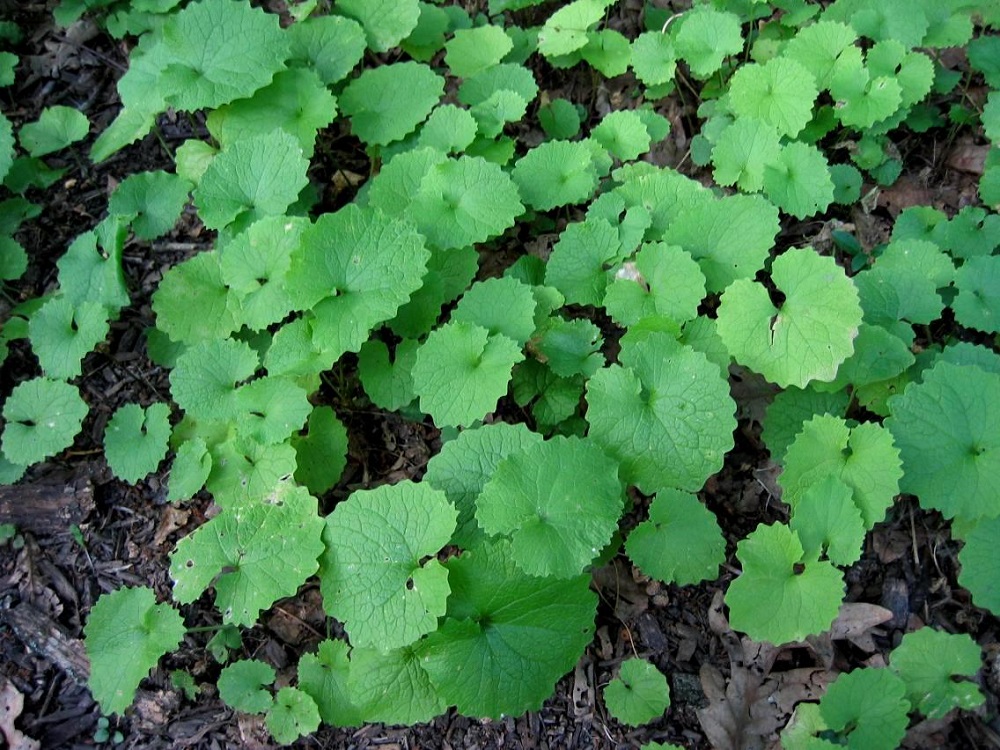Garlic Mustard
Garlic mustard is an invasive plant from Europe that invades woodland habitats in North America and impacts forest biodiversity. In some woodlands, dense stands of garlic mustard shade out spring blooming ephemerals. Garlic mustard replaces native plants in high quality natural areas, which in turn reduces critical food resources for birds,butterflies, and other wildlife. In addition to physically crowding out native plants, garlic mustard releases chemicals into the soil that hinder the growth of other plants. The replacement of native plants by garlic mustard can hinder forest regeneration by limiting tree seedling growth. Garlic mustard seeds are able to live in the soil at least 7 years before sprouting.

Garlic mustard is a biennial herb that usually grows to 2 to 3 feet when mature, though it spends its first growing season and the following winter as a small leafy rosette. Leaves are triangular or heart-shaped, and are roughly and irregularly toothed.

The second year stem is topped by clusters of small, white, 4-petaled flowers. All parts of the plant smell of garlic when crushed, especially early in the season. Adult plants die in midsummer, but persist as tall dead stalks with thin seed pods. Although tolerating a range of conditions, garlic mustard is most common in moist forest edges, open woods, and shaded roadsides.
For more information about Garlic Mustard please check the links below